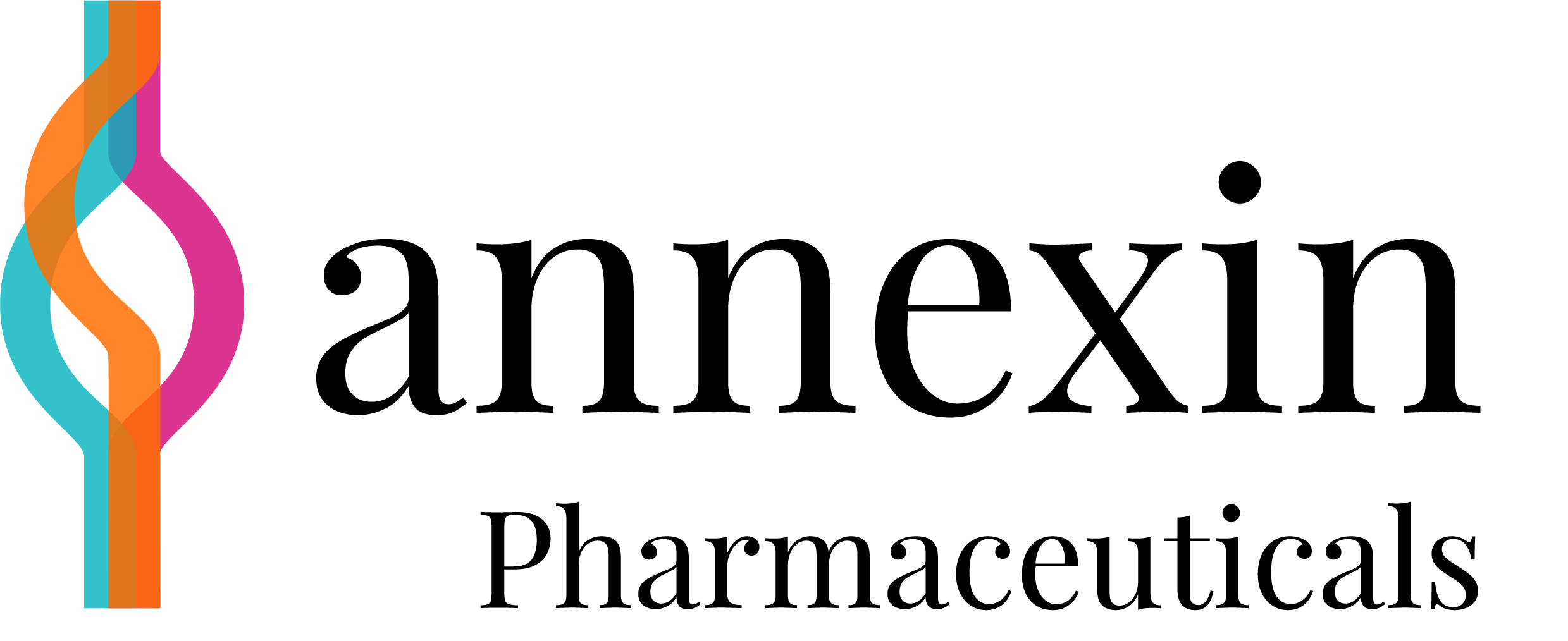Prenumeration
Beskrivning
| Land | Sverige |
|---|---|
| Lista | First North Stockholm |
| Sektor | Hälsovård |
| Industri | Bioteknik |
Intresserad av bolagets nyckeltal?
Analysera bolaget i Börsdata!
Vem äger bolaget?
All ägardata du vill ha finns i Holdings!
- The investigational new drug candidate ANXV demonstrated a favorable safety profile.
- Out of 14 subjects who received ANXV and were followed for 4 months, 12 improved or had stable disease with no or a single anti-VEGF treatment.
- The data supports further clinical development of ANXV in RVO.
Annexin Pharmaceuticals AB today announced topline data from the proof-of-concept Phase 2a trial evaluating ANXV treatment in patients with the eye disease retinal vein occlusion (RVO). In the study, 15 patients were enrolled to receive ANXV intravenously. 14 patients were available for four months follow-up. No safety or tolerability events associated with the ANXV treatment have been reported. The key endpoint of the study has thus been met. Based on visual acuity and retinal swelling, 12 of the 14 patients improved or had stable disease. Of these patients, 7 received none and 5 received a single anti-VEGF injection into the eye. Final analysis and interpretation of the complete dataset is pending database lock.
“We are thankful to the investigators, clinical trial site staff, and most importantly, all the patients in this clinical trial for their participation in advancing ANXV in RVO. Today’s reported top-line data represents a major milestone for Annexin and the results confirm what we have previously reported. We are committed to advance this promising first-in-class asset based on its compelling medical and commercial potential. We know that the potential licensing partners are keen to review both these topline data and the detailed case by case patient outcomes analysis that is expected to be completed in the coming months,” said Anders Haegerstrand, CEO at Annexin Pharmaceuticals.
“We are pleased to report that we have reached the main goal of the study, to confirm that ANXV is safe and well tolerated by patients with RVO. In addition, we have also observed promising signals of effect that are in line with the expected mode of action of ANXV and that are clinically relevant. The findings were accompanied by fewer than expected anti-VEGF injections,” said Anna Frostegård, Chief Scientific and Medical Officer at Annexin Pharmaceuticals.
“The current standard of care with repeated intraocular injections of anti-VEGFs to reduce the recurring retinal swelling represents a huge burden for the patients as well as significant costs to the society. Our data indicates that ANXV may be able to durably improve visual acuity and reduce anti-VEGF requirements by stabilizing the retinal microenvironment affected by the vein occlusion. The data from this trial provides key information for the design of future clinical studies, which we plan to discuss with the regulatory authorities and potential partners,” Anna Frostegård continued.
ANXV at doses of 2, 4 or 6mg was administered as an intravenous infusion daily for five days early after diagnosis. The parameters presented in this topline report are the standardised measurements of best corrected visual acuity (BCVA) and swelling of the retina (central subretinal thickness, CST) along with requirement for anti-VEGF injections, the latter being a decision taken by the patient’s treating ophthalmologist.
“We are very encouraged by these results. At this stage, the favorable safety and tolerability profile is critical for further clinical development. That 12 out of 14 patients, many of whom with the more ischemic forms of RVO, were deemed to require no or only one anti-VEGF injection during the first four months is very promising. This should be viewed in relation to the typical use of four to six anti-VEGF injections during the first six months after RVO diagnosis,” said Mario Fsadni, Therapeutic Area Head Ophthalmology at Annexin Pharmaceuticals. We believe ANXV will potentially become an important addition to the management of RVO patients. We are looking forward to further investigate the use of ANXV in RVO in larger randomized, placebo-controlled clinical studies,” Mario Fsadni concluded.
About the study
Annexin's clinical Phase 2a proof-of-concept study included patients who had recently suffered from RVO, but had not been treated with the standard anti-VEGF therapy. After the protocol update, the study was an open-label study where patients receive the investigational new drug ANXV (a recombinant human Annexin A5 protein), administered intravenously for 5 days followed by anti-VEGF if needed and were followed up to four months with examinations to assess safety, tolerability and any signals of effect that may be related to ANXV. The study was conducted at 7 retinal specialist clinics in the US and has included 15 patients treated with ANXV.
About retinal vein occlusion (RVO)
RVO is a vascular disease of the eye in which blood flow in the veins of the retina is blocked. The disease often leads to severe visual impairment or blindness and the need for long-term treatment. The treatments for RVO that are available today are injected directly into the eye, usually monthly, and have no effect on the blockage of blood vessels that causes RVO. According to a 2021 report by Transparency Market Research, the value of the RVO market in 2025 is estimated to reach approximately USD 20 billion, and it is expected to grow by approximately 7 percent annually over the next 10 years.
Every care has been taken in the translation of this document. In the event of discrepancies, the Swedish original will supersede the English translation.

